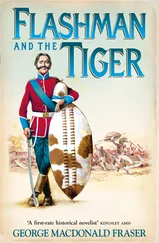The CIA argued that no important Agency estimates of Soviet or Chinese military elements (posture, weapons capabilities, size and composition of forces) would be changed significantly by the heightened resolution of MOL photography. While it would be really cool to have ground resolutions to twelve inches (I’m paraphrasing), it’s far too expensive for the mission requirements. Our toy is better than their toy.
And it worked. In June 1969, Nixon changed his mind. He reinstated the Hexagon program and scrapped the MOL. The CIA had won. The United States would launch twenty Hexagons between 1971 and 1986, bringing back key intelligence that according to some analysts helped prevent World War III. With Hexagon-provided intelligence, American intelligence analysts were able to conclusively count numbers of Soviet and Warsaw Pact troops, tanks, aircraft, and ballistic missiles to make sure Moscow wasn’t violating arms control treaties. With this technology, American leaders could confidently end the Cold War, and do it without firing a shot.
AND THEN WHAT?
The Soviets had their own version of the MOL, known as Almaz, which actually went into space in the mid-1970s. It was less a pure reconnaissance platform (like MOL would have been) and more a battle station in space (“That’s no moon…”). Almaz was equipped with a 23-millimeter rapid-fire cannon mounted on the outside of the station. The cannon would be aimed by rotating the entire station. Why have a cannon on a space station? Remember when we talked about “negation”?
Finally, the scientists, engineers, and bureaucrats who worked on MOL were obviously very disappointed with the program’s cancellation. But what about those men who had been chosen to fly the missions? They were clearly unhappy, but most didn’t give up their dream of going into space. Seven of the seventeen MOL crew members were accepted into NASA’s astronaut program. Richard Truly piloted the Space Shuttle Enterprise, became the commander of the Naval Space Command as a vice admiral, and then became the administrator of NASA from 1989 to 1992. Robert Crippen piloted or commanded multiple Space Shuttle missions (including piloting the very first one), and from 1992 to 1995 served as the director of the Kennedy Space Center. James Abrahamson reached the rank of lieutenant general (three stars) in the U.S. Air Force, and was appointed the director of the Strategic Defense Initiative (SDI, or “Star Wars”) under President Reagan. Robert Herres became a four-star Air Force general, and rose to become the vice chairman of the Joint Chiefs of Staff.
One MOL crew member, Air Force major Robert H. Lawrence Jr., stands out among these greats. He was the first African American to be chosen as an astronaut by either NASA or the military. When asked about the significance of his selection, Lawrence was a stoic test pilot through and through: “This is nothing dramatic. It’s just a normal progression. I’ve been very fortunate.”
Sadly, he never made it into space. On December 8, 1967, Lawrence was in the backseat of an F-104D fighter aircraft while the pilot was practicing a special landing approach called a “flare” (later used during the Space Shuttle program). The pilot misjudged the approach and smacked into the runway, collapsing the landing gear and bouncing the aircraft two thousand feet down the runway, where it hit the ground again. Both Lawrence and the pilot were able to eject, but Lawrence was killed when his parachute failed to deploy. Because of the secrecy surrounding the MOL program, the American public had to wait years to learn of this trailblazing American hero. Finally, in September 1997, in tribute to his outstanding accomplishments as an American space pioneer, the crew of the Space Shuttle Atlantis carried his MOL mission patch into orbit. On December 8, 1997, the thirtieth anniversary of his death, Lawrence’s name was engraved in the Astronauts Memorial Foundation’s Space Mirror at Kennedy Space Center Visitor Complex, which honors astronauts who made the ultimate sacrifice.
When I was seven years old, my mother and father made a very questionable parenting decision. They let me stay up way past my bedtime to watch a made-for-television movie called The Day After. If you’ve seen it, you are probably chuckling a little right now, imagining the psychological damage this did to my developing brain, which usually found stimulation through GI Joe cartoons and Bugs Bunny. In fact (whether you want to call this “damage” or not), The Day After is the reason for who I am today. It was the catalyst for my interest (some would say obsession) with nuclear weapons, their history, and the intelligence work surrounding their development, deployment, delivery systems, and global impact.
And I didn’t know this at the time, but this movie left a lasting impact on so many Americans, of multiple generations. One hundred million viewers tuned in to the broadcast, which is still the record for a TV movie—something ridiculous like 62 percent of Americans watching TV that evening were watching The Day After . For context, only seventy-three million Americans tuned in to see the Beatles perform for the first time on The Ed Sullivan Show .
The Day After was an EVENT.
Even President Ronald Reagan was captured in this cultural zeitgeist. Reagan watched the movie several days before its release, and felt strongly impacted by the images on the screen. In his diary that evening, he wrote that the movie was “very effective and left me greatly depressed.” He even insinuated that the film had changed his perspective on nuclear policy and nuclear war. The Ronald Reagan presidency continues to be politically polarizing, but it’s clear to me as a historian that Reagan truly despised nuclear weapons, and especially the threat they posed to the security of the United States. Part of my belief comes from what happened during his negotiations with Soviet leader Mikhail Gorbachev. Ronny and Gorby agreed in principle to dismantle both countries’ nuclear weapons arsenals at the Reykjavík Summit meeting in 1986. It didn’t happen (obviously), but they tried!
But another part of my belief comes from President Reagan’s fixation on the Strategic Defense Initiative (SDI, or “Star Wars,” as the media snarkily dubbed the program). As much as people love to give him grief for what ended up a trillion-dollar quagmire, or accuse him of wanting Star Wars so that the United States could have a legitimate advantage over the Soviets in a nuclear war, Reagan seemed to truly believe that ballistic missile defense could finally release us from the perpetual, enduring, soul-crushing threat of Armageddon.
To make sure The Day After remained fiction.
The sad irony, of course, is that Reagan’s faith in the promise of SDI doomed the Reykjavík Summit in the first place. When both men realized they might be willing to dismantle the entirety of their nuclear programs, they jumped at the chance. But Gorbachev insisted that Reagan give up research on SDI. Why would the United States need a missile defense if the Soviet Union had no nuclear weapons? Gorbachev had a point, but Reagan was unswayed. Why would the Soviets care about SDI research if neither side had a weapons program?
We were that close. Yet neither man was willing to cede.
Both sides went back to their corners, and the Cold War continued (for a couple more years, at least).
And the Reagan administration continued to dump billions of taxpayer dollars into programs that were so ridiculous we still don’t have the technological know-how today to make them work. Not even close.
Читать дальше











